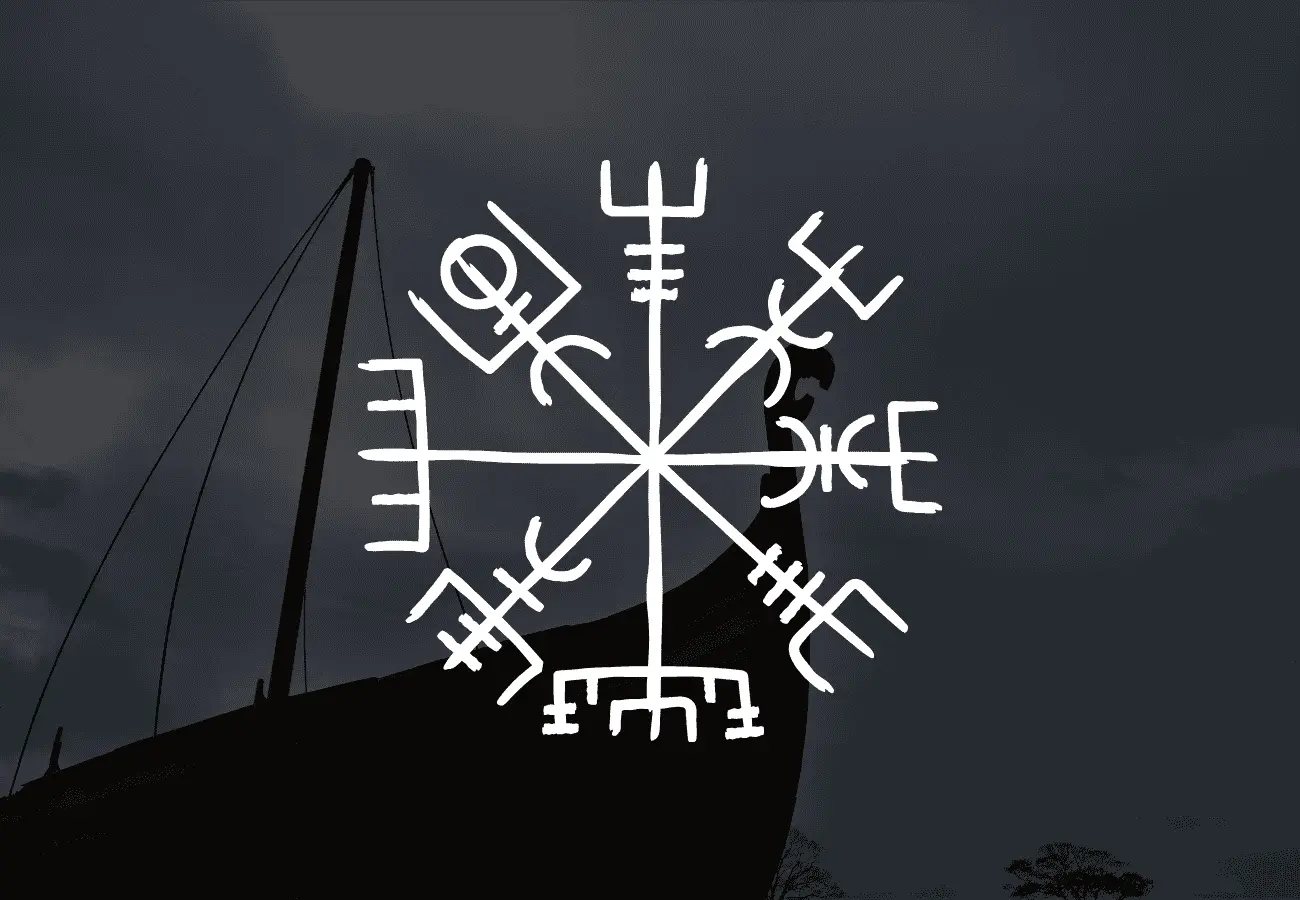
curiosspot.com
Unveiling the Truth: The Vegvísir Is Not a Viking’s Compass
The Common Misconception
The Vegvísir, often called the “Viking’s Compass,” is widely believed to be a navigational tool used by Vikings during their seafaring expeditions. However, this assumption is inaccurate. Despite its striking, rune-like design, the Vegvísir is not rooted in Viking history but is instead a symbol with Icelandic origins. Misinterpretations have led to its popularization as a Viking artifact, but the truth lies in its much later appearance in historical records.
This article explores the origins, historical context, and modern interpretations of the Nordic compass. By separating fact from fiction, we uncover the true meaning of this iconic symbol and its significance in both ancient and modern times.
Understanding the True Origins of the Vegvísir
A Guide Through Harsh Terrain
The Norse symbol first appeared in the 19th-century Huld Manuscript, an Icelandic collection of magical staves. Its name translates to “wayfinder” or “guidepost,” and it was believed to help travelers navigate through unfamiliar or challenging conditions. Unlike the tools used by Vikings, such as sunstones, the Vegvisir compass was a spiritual symbol meant to provide guidance and protection rather than a practical navigational device.
Cultural and Spiritual Significance
In Icelandic folklore, the Vegvísir symbolized resilience and safety. It was often drawn or inscribed to ward off misfortune and ensure safe passage. Alongside similar symbols like the Ægishjálmur (Helm of Awe), the Vegvísir was deeply tied to magical traditions and spiritual beliefs, offering more than physical direction—it was a talisman of hope and security.
Debunking the Myth of the Viking’s Compass
While the Vegvísir has been romanticized as part of Viking lore, no historical evidence supports its use during the Viking Age (793–1066 AD). Vikings were skilled navigators, relying on tools like sunstones and the position of celestial bodies to guide them. The association between the Vegvísir and Vikings likely emerged from its Nordic aesthetic and the modern fascination with Viking mythology.
The Purpose and Meaning Behind the Vegvisir
Guidance and Protection
The intricate design of the norse compass symbolizes guidance, offering metaphorical protection during life’s challenges. Its intersecting lines and stave-like structure convey a sense of interconnectedness, embodying the idea of finding one’s path even in the darkest of times.
Resilience and Strength
Beyond its literal meaning, the nordic compass serves as a reminder of inner strength and resilience. Whether worn as a tattoo or a piece of jewelry, it represents the bearer’s determination to overcome adversity and navigate life’s uncertainties.
Modern Symbolism of the Viking’s compass
Tattoos and Personal Expression
In modern times, the Vegvísir has become a popular tattoo design, often symbolizing personal direction, protection, and resilience. It is frequently paired with other Nordic symbols like the Yggdrasil (World Tree) or runic inscriptions, creating a powerful representation of Viking-inspired aesthetics and cultural identity.
Jewelry and Everyday Use
The norse wheel timeless appeal has also led to its incorporation into jewelry, such as necklaces and rings. These pieces allow individuals to carry a piece of Nordic tradition while expressing their personal connection to its symbolic meanings of guidance and protection.
Final Thoughts on the nordic compass Legacy
The viking’s compass journey from an Icelandic magical stave to a global cultural symbol highlights the power of reinterpretation. While it may not be a norse symbol in the literal sense, its role as a guiding emblem resonates with people across cultures and eras. Whether worn as a tattoo, a piece of jewelry, or embraced as a spiritual symbol, the Vegvísir continues to inspire and guide, embodying resilience, protection, and the human desire for direction in an unpredictable world.










